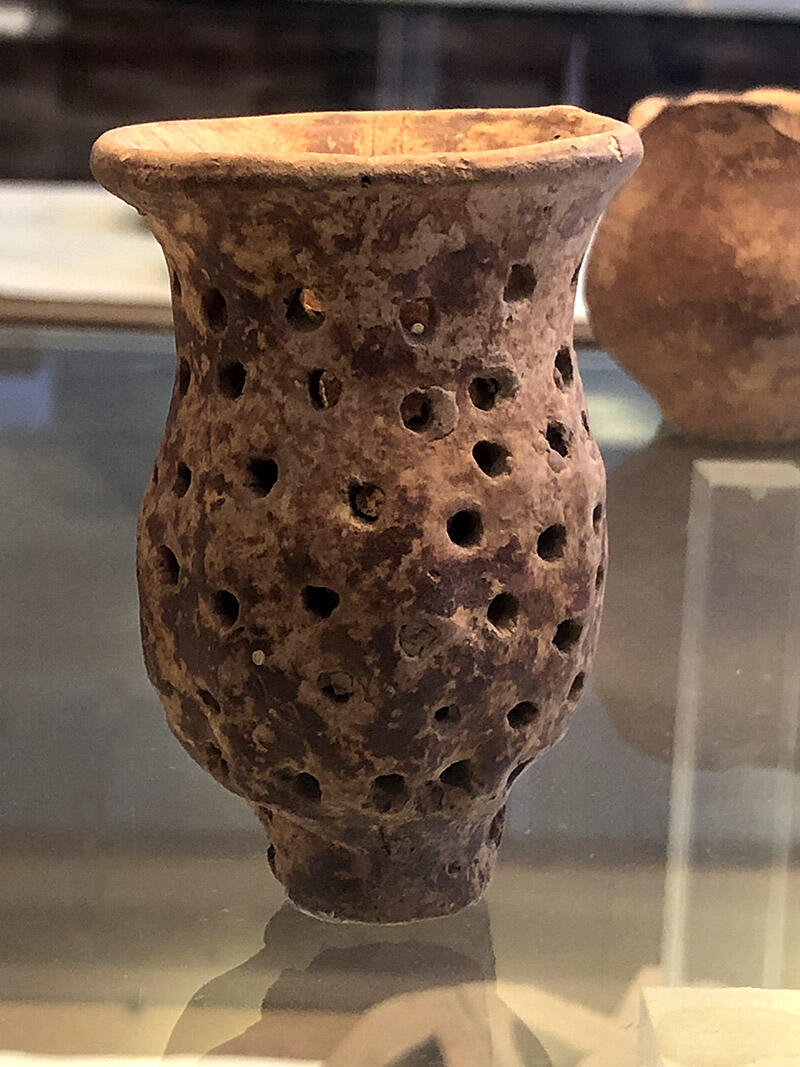A beautifully formed and now aged perforated jar. "This shape of perforated jar may have been used as a strainer at the end of a hollow straw, similar to those used in Mesopotamia for drilling beer from a large jar filled with some kind of mash. Larger perforated jars at Harappa and other sites were set inside jars, possibly for making beer or for processing milk to make cheese. Recent analysis of one fragmentary perforated jar by Chakraborty et. al suggests possible use for dairy processing, but a larger sample of perforated jar fragments studied by Akshyeta Narayanan indicates that they may have been used for many different purposes," writes Dr. Kenoyer.
Of of a similar object found inside a large deep bowl Dr. Kenoyer writes (Ancient Cities, p. 236) that it "may have been used in the preparation of beer or other brewed beverages. Wheel thrown and holes punched through from the outside."
Of these vessels and use in general (p. 154) he adds:
"Another distinctive vessel associated with the Indus cities is the perforated cylindrical jar that may have been wrapped in cloth and used as a strainer for the preparation of fermented beverages (fig. 8.16). These vessels have been found with burial offerings in the Harappan cemetery, where they are placed vertically inside large open-mouthed vessels (fig. 8.17) that may have been filled with fermenting mash, probably barley. With the cloth on the outside, the numerous perforations would allow the liquor to strain through and collect in the central hollow area and be removed with a dipper or by long straws. Studies of the sediments inside these perforated vessels have not revealed the nature of the beverage being brewed, but ongoing research of the porous pottery itself may recover some traces of organic materials to help identify the vessel's contents."

